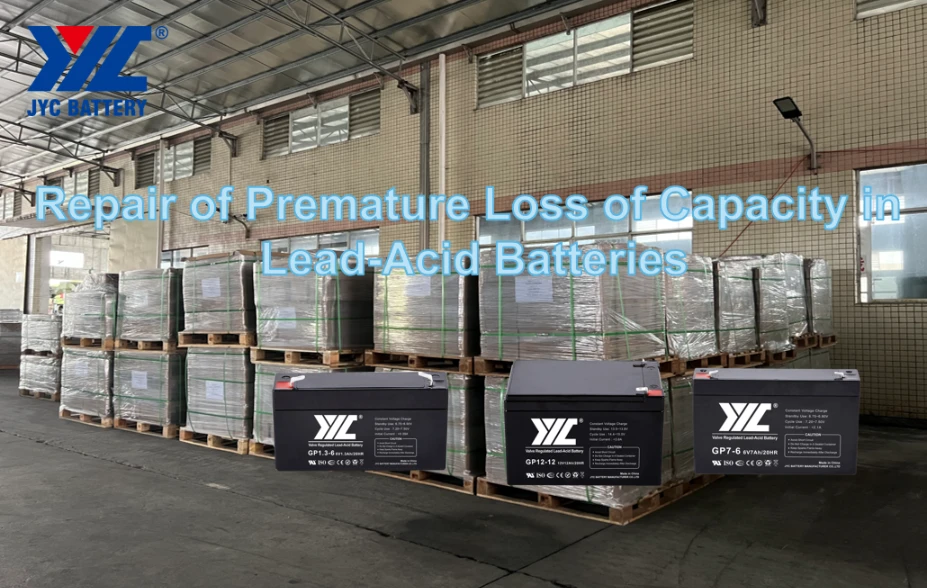
Characteristics of Premature Capacity Loss
When low-antimony or lead-calcium is the grid alloy, the capacity suddenly drops in the initial stage of battery use (about 20 cycles), which makes the battery invalid. Almost every cycle battery capacity will drop by 5%, and the rate of capacity drop is relatively fast and early.
Solutions to The Causes of This Phenomenon
- Tin content of the positive plate: 1.5%~2% tin content is basically used for deep cycle batteries.
- Increase the assembly pressure.
- The acid content of the electrolyte should not be too high.
Note in use
- Avoid the initial charging current being too low continuously;
- Reduce deep discharge;
- Avoid overcharging too much;
- Do not increase battery capacity through excessively high active material utilization. On the surface of the material, because the overpotential of H+ reduction on antimony is about 200mV lower than that on lead, the charging voltage decreases when antimony accumulates, and most of the current is used for water decomposition. The battery cannot be charged normally and thus fails.
Restoration of battery with early capacity loss
The first is to increase the initial charging current to 0.3C~0.5C, and then use a small current to supplement the charging;
Secondly, the fully charged battery is best stored at 40°C to 60°C; discharge to 0V with a small current of less than 0.05C. After the battery voltage reaches half of the nominal voltage, the discharge will be very slow. Repeat this several times, and the capacity of the battery can be restored.
Be sure to identify the battery if it occurred during the first 20 cycles. For a battery whose capacity has declined in the middle and late stages, this method can only damage the positive plate of the battery, resulting in softening of the positive plate.
Lead-calcium alloy series batteries often have a few batteries whose capacity drops inexplicably. The main reason is that the batteries are unbalanced. The sufficient voltage of lead-calcium alloy series batteries is relatively high. Generally, the charging voltage of 12V batteries is greater than 16V. When the voltage of the charger is too low, it is easy to cause the battery to become unbalanced.
The phenomenon happens like this. When a group of batteries are used together, the self-discharge of each cell of the battery cannot be absolutely equal. A battery with a little larger self-discharge cannot be fully charged every time with a constant voltage charger. If there is no gassing reaction in the grid, the relative area of the plate contacting the electrolyte is large, and the self-discharge is large.
However, the cell with small self-discharge can be fully charged every time. When it is fully charged and then overcharged, a gas evolution reaction will occur and gas will be generated. The plate contacts the electrolyte surface relatively decreases, and the self-discharge decreases. At the same time, the charging voltage rises and the charger is turned off.
The self-discharge is small, and the self-discharge of the high-voltage grid is getting smaller and smaller, and it can be fully charged every time. However, the self-discharge of the grid with large self-discharge is getting bigger and bigger, and it cannot be fully charged every time, and the power is getting smaller and smaller as it is used. Long-term insufficiency will vulcanize and fail. The root of the problem is that the constant voltage charger cannot be used. If the constant voltage charger is used, the above phenomenon will occur if the constant voltage value is too low, and the battery thermal runaway will occur if the constant voltage value is too high. A good way is to use a multi-stage charger with multiple currents and multiple voltages. And at the end of charging, there must be a small current long charge with higher voltage and lower current to balance the battery power.



